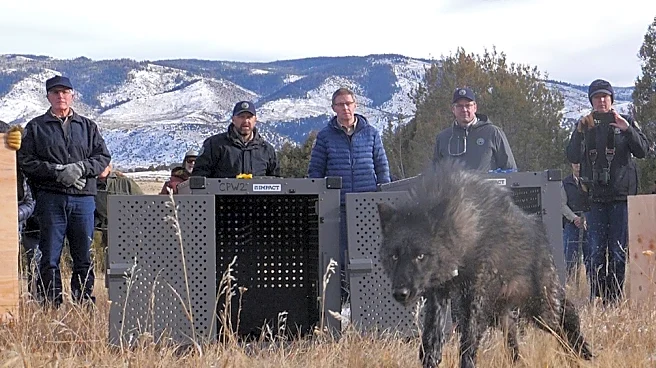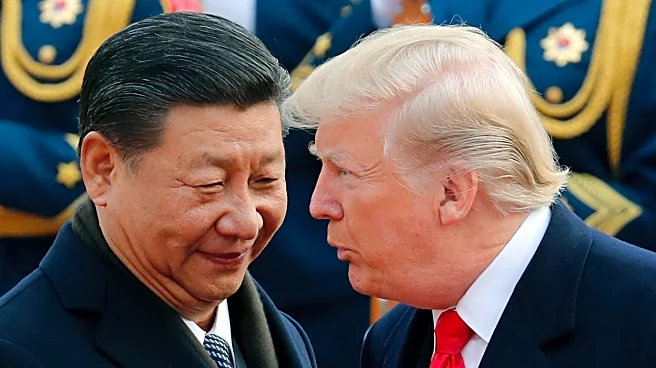What's Happening?
The Trump administration has instructed Colorado to halt the importation of gray wolves from Canada, a move that could disrupt the state's ongoing efforts to reintroduce the species. This directive comes as Colorado has been actively releasing wolves west
of the Continental Divide since 2023, following a narrow voter approval in 2020. Currently, about 30 wolves inhabit the state's mountainous regions, with plans to increase this number to potentially 200 or more. The U.S. Fish and Wildlife Service, under the direction of Brian Nesvik, has mandated that Colorado must source its wolves from Northern Rockies states, such as Idaho, Montana, and Wyoming, rather than Canada. This decision poses a challenge for Colorado, which had planned to relocate 10 to 15 wolves from British Columbia this winter. The state's agreement with the British Columbia Ministry of Water, Land and Resource Stewardship was signed prior to receiving the federal directive.
Why It's Important?
This development is significant as it affects Colorado's wildlife management and conservation strategies. The reintroduction of wolves has been a contentious issue, particularly in rural areas where livestock attacks have occurred. The federal directive could hinder Colorado's ability to meet its reintroduction goals, potentially impacting ecological balance and biodiversity in the region. Additionally, the decision reflects broader political dynamics, as it aligns with opposition from rural stakeholders and federal support under President Trump. The situation underscores the complexities of wildlife management and the interplay between state and federal authorities in conservation efforts.
What's Next?
Colorado is currently evaluating its options to continue with this year's planned wolf releases. The state is in communication with the Interior Department to explore potential solutions. The outcome of these discussions could influence future wildlife management policies and the state's ability to fulfill its conservation commitments. Stakeholders, including environmental groups and rural communities, are likely to respond to these developments, potentially leading to legal or political actions.
Beyond the Headlines
The directive raises questions about the legal and ethical dimensions of wildlife reintroduction programs. The interpretation of federal guidelines and the balance between state autonomy and federal oversight are central to this issue. The situation also highlights the cultural significance of wolves in Colorado, where public opinion is divided between conservation efforts and concerns over livestock safety. Long-term, this could influence public policy and conservation strategies across the U.S.















